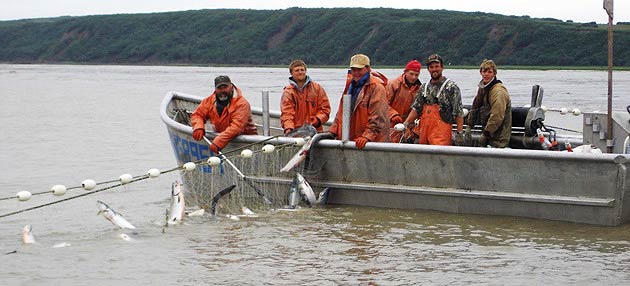Alaska fisheries would fare better than most state agencies and people under Gov. Mike Dunleavy’s budget cuts.
Just under $1 million was cut from the commercial fisheries division of the Alaska Department of Fish and Game, leaving it with an $85 million budget, half from state general funds.
“To give the governor credit, he recognized the return on investment,” said Doug Vincent-Lang, ADF&G commissioner. “It’s a theme I had all the way through the legislature that we take a $200 million budget of which about $50 million is unrestricted general funds and we turn that into an $11 billion return to our state. And I think he got that.”
Vincent-Lang added that Dunleavy also did not veto the travel budget for the Board of Fisheries and its advisory committees.
It’s indefinite still how the budget cuts will play out, and Vincent-Lang said he is trying to avoid staff cuts to the 700 commercial fish positions.
“I suspect we may have some but we will try to do that through vacancies and a variety of other things as we have retirements,” he said.
Also set to get axed is funding for research projects, such as salmon in-season sampling and tanner crab surveys at Prince William Sound, and five salmon weirs at Kodiak and Chignik. Salmon counting is likely to be reduced at the Yukon River’s Eagle and Pilot Station sonars, along with various stock assessment surveys for groundfish.
“I’ve asked my staff to look at their overall program, and not necessarily cut the projects, but take the ones that have the least impact on the management of our fisheries across our state in terms of economic value back and cut those,” he explained, acknowledging that the cut backs could lead to more cautious management.
“Clearly, any time you reduce your forecast ability you become more precautionary in your in-season management approach until you can become more certain,” he said.
Vincent-Lang said the state hopes to form local partnerships to help fund shortfalls, “like the Bristol Bay Science Initiative and Yukon River tribal groups to try to find ways that we can replace that money to ensure that we minimize the impact to our ongoing management programs.”
Those partnerships “are the path forward” for Alaska’s fishing industry to jointly fund research, he stressed.
“If we are going to be continually dependent on state general funds, that presents a challenge,” he said. “We need to look for ways to partner with different groups to get a diversified funding stream.”
Partnership also will be important to fund ADF&G’s special areas management which is facing a $280,000 budget cut for its oversight of 12 game refuges, 17 critical habitat areas and three wildlife sanctuaries. Vincent-Lang said using hunting dollars with matching grants in some areas would help make up for that budget shortfall.
“The rest of the department, like the sportfish and wildlife divisions, are largely funded by federal funds that are dedicated to those activities and we match them with hunting and sport fishing
license dollars. There’s very little state general funds in those divisions,” he explained.
The Habitat and Subsistence Divisions will remain under the auspices of ADF&G, despite reports that two director-level positions and associated funding would move to the Office of Management and Budget. Vincent-Lang said those two positions were open when he took the job and he opted not to fill them.
“I didn’t want to lose actual staff members in those divisions that were equal to a director position,” he explained. “If a director position cost $200,000 I would have lost three or four staff members in both divisions to make up for that. I willingly gave up those two positions to OMB because they needed them, but the activity they were doing remains under the supervision of ADF&G.”
The total budget for the Alaska Dept. of Fish and Game is $200 million.







